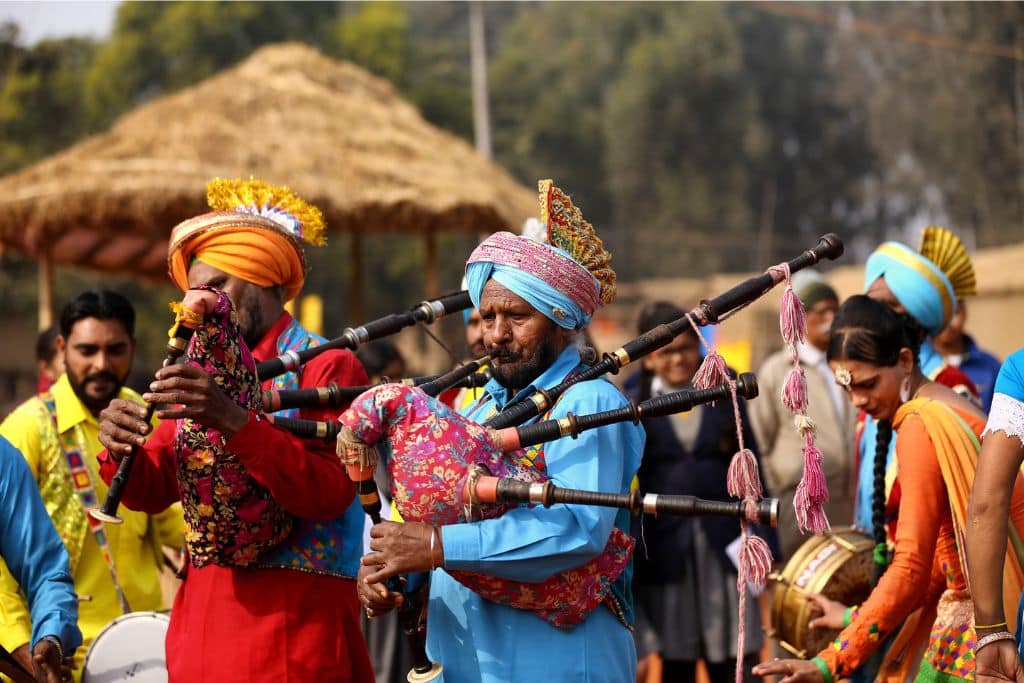Every year on August 9, the world celebrated the International Day of the World’s Indigenous Peoples. Tribal communities have been indispensable forces in the maintenance of ecosystems across the world. For centuries, Indian tribes have helped preserve natural habitats and promote conservation through sustainable practices in farming, fishing, and cohabiting spaces with wildlife. Their rituals and beliefs further contribute to environmental protection. However, these communities are often confronted with forced eviction and other threats that affect their livelihood as well as the ecosystems they helped preserve for so long.
—
The Millennium Ecosystem Assessment conducted by the United Nations assessed the impact of environmental change on human well-being and called for several actions toward conservation. The report popularised the term ‘ecosystem services’ in lieu of the life-supporting services ecosystems provide to human wellbeing. These include provisioning services like food and medicine, regulatory services like climate regulation and decomposition, cultural services like aesthetic beauty, and supporting services like water cycling. At the crossroads of all these services lie the interdependencies of tribes and the ecosystem.
Tribal communities constitute around 9% of the Indian population with the majority residing in Central India. These communities have accumulated indigenous knowledge on agriculture and cohabiting that have little consequence on the forest ecosystems.
In areas like the Ziro valley, the Apatani tribes are known for their sustainable agriculture practices of wet rice cultivation where nutrient washouts from hilltops flow in to enable crop growth. Land irrigation is facilitated by canals dug and linked to streams from hills. Soil fertility is maintained by organic wastes and the recycling of crop residues. Similarly, native animal populations like the Himalayan squirrel are protected through a mechanism called ‘Dapo’, where the community head lays down rules on hunting and extraction, nonadherence to which can lead to penalties.
The Garasia tribes are known to have extensive knowledge about the ethnomedicinal plants in the Sirohi district, many of which are listed in the IUCN Red List of threatened species. To protect them, tribal communities have developed patches of forest termed sacred groves for folk deities.
Other sustainable practices include the collection of medicinal plants by inspecting the maturity of the leaves to prevent overharvesting by the Bhotias of Central Himalayas. Tribe members also cultivate barley and buckwheat in the upper valleys during summer for consumption. Once these crops are harvested, cattle and sheep are allowed to graze on the land. During this time, the upper valleys are prepared for cultivating crops which are then used once the produce is harvested for grazing activities. This seasonal cycle of farming and grazing allows for the utilisation of pastures and is called transhumance.
1. Wildlife Protection
In terms of wildlife protection, tribal communities often employ totems and religious beliefs that restrict the culling of animals and certain plants. For example, for the Adi tribes in Arunachal Pradesh, tigers, sparrows, and pangolins are believed to be well-wishers of humankind and hence are not hunted. Likewise, it is believed that cutting down banyan trees can lead to famine and death. This ultimately helps in specie preservation. Mount Vojo Phu is considered a sacred mountain for the Akas, a tribal community of Arunachal Pradesh. For this reason, access to the mountain is restricted in an effort to help preserve the local flora and fauna.
2. Agriculture
In terms of agricultural practices, the Kadars of Tamil Nadu pluck fruits and vegetables only from the mature stems of the plant, which are then cut and replanted for future harvest. The Irulas, Muthuvas, and Malayalis farms follow a mixed cropping system wherein several types of crops are grown simultaneously in a specific area. This prevents overexploitation of the water table and soil nutrients as different crops have different requirements and in addition, prevents soil erosion.
The Gond, Pradhan, and Baiga communities of Madhya Pradesh undertake Utera farming, a method where the next seeds are sown in paddy fields before the primary crops are harvested to make use of the existing moisture from the soil before the land dries up. These communities also follow the Badi cropping system in which fruit crops and trees are planted along the periphery serving as a barricade from droughts and heavy rains while preventing soil erosion. Mulching, burning of leaves for residue, and retainment of roots and stumps allow for soil fertility and nutrient cycling .
3. Fishing
Fishing at present involves some amount of agricultural pesticide, dynamiting, and chemicals. As opposed to these harmful methods, tribal communities employ more sustainable techniques. For example, the Wancho and Nocte tribes of the Tirap district create obstructions in streams by using bamboos, stones, coir, and tree branches in which fishes get trapped and are then collected and distributed amongst the communities in a method known as Bheta.
Indian tribes such as the Adi and Galo employ Lipum fishing techniques wherein large bamboo baskets lined with seaweed are constructed and placed at the bottom of streams. The seaweed attracts small insects which in turn draw the attention of fishes. Fishes caught are inspected and juvenile fishes are released back into the stream. This practice is carried out during the winter months to prevent people from fishing during the breeding season. In this manner, fish populations are kept intact while local needs are fulfilled.
What Threats are Indian Tribes Facing?
Despite the sustainable lifestyle of tribes, their populations have dwindled with several communities migrating to cities for lucrative jobs. The ones left behind are under threat of eviction by government bodies and anti-poaching squads. The creation of protected land by the government has led to several displacements and the 2006 Forest Rights Act has been an inadequate response to address land rights, leading to the forced eviction of several tribal dwellers.
Cases of harassment, bribes, delays in claim settlement, and illegal evictions have also been reported. In addition to this, the objective of conservation is also not met.
Tribal life is largely an embodiment of conscious extraction without depletion and a sense of responsibility towards future generations. The Soliga tribes of Karnataka take honey from combs and leave some on forest floors for tiger and bear cubs to consume. They also light controlled fires to prevent invasive plants that can destroy the forests and thereby affect animal life and the forest food chain.
The Chenchu, Baiga, and Mising tribes consider tigers a companion and in the areas of their residence, tiger populations have increased. Evictions of these Indian tribes imply considerable ecological damage sustained by forests. Today, lantana an invasive plant species has destroyed several hectares of forests, prominent of those in Bandipur due to the ban on shifting techniques.
In the Sariska tiger reserve – located in the Alwar district of Rajasthan – eviction meant adverse changes in the vegetation composition which in turn affected the avifauna population. In Pin Valley National Park there is competition between the wild ibex and the domestic goats and sheep for pastures leading to overgrazing which previously was managed through transhumance. Villages inside forests have resulted in grassland formations serving as grazing plots for herbivores which in turn enable the carnivorous population to maintain the food cycle. In some cases, like in Kanha National Park, these grasslands also served as sites of food for endangered animals like antelopes and some species of deer
The Importance of Protecting Indian Tribes
It is imperative to focus ecological protection on enhancing tribal communities as they are key stakeholders of indigenous knowledge. Their sustainable lifestyle makes them extremely capable of protecting and conserving the environment around them.
Some of their practices have helped formulate policies on conservation. For example, Indian tribes in the Dindori district of Madhya Pradesh grow red gram along with rice to prevent soil erosion, these are exchanged with Mahua flowers and black gram to replenish soil fertility. This sustainable model was borrowed by the Regional Agriculture Station and further refined to propagate sustainable agricultural practices. Similarly, the Indian Council of Agricultural Research (ICAR) implemented the National Agricultural Technology Project to test out the Utera cropping system in 1999.
Thus, impetus should be provided to tribal communities to share their knowledge towards conservation and indigenous methods that enable researchers, policymakers, and conservationists. This can only be done when the tribal communities are given positions of stewardship and are stakeholders of the land that they have cultivated for centuries.
You might also like: Solutions to Deforestation: Indigenous Communities as Gatekeepers of a Greener Society


















